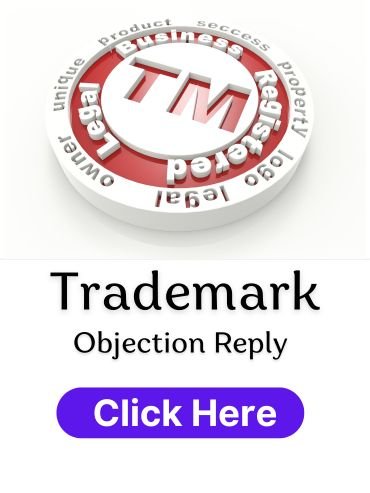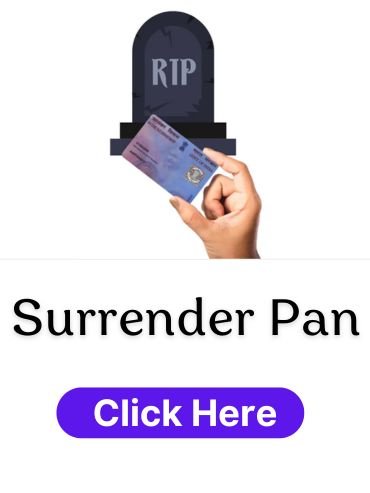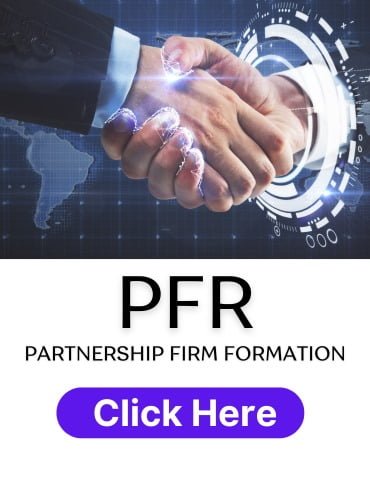Reply to Trademark Objection
₹2,000.00
*Government Fees will be paid by client separately*
*All Prices are inclusive of 18% GST*
*For better experience & guidance we recommend you to talk with our experts*
Description
Reply to Trademark Objection
Responding to Trademark Objections:
Introduction:
Reply to Trademark Objection Receiving a trademark objection can be a daunting experience for businesses seeking to protect their brand identity. However, it’s essential to understand that objections are a normal part of the trademark registration process and can be overcome with careful planning and strategic responses. In this guide, we will explore the steps involved in responding to trademark objections, providing practical advice and insights to navigate this process effectively.
1. Understanding Trademark Objections:
– Reply to Trademark Objection Trademark objections are raised by trademark examiners or third parties during the registration process if they believe there are issues with the trademark application. These issues may include conflicts with existing trademarks, lack of distinctiveness, or failure to meet legal requirements.
– Objecting parties typically provide detailed reasons for their objections, which serve as the basis for the examination process.
2. Analyzing the Objection:
– Upon receiving a trademark objection, carefully review the objections raised by the examiner or third party. Understand the specific grounds for the objection and assess the validity of the concerns raised.
– Evaluate whether the objections are based on factual inaccuracies or misunderstandings that can be clarified through additional information or evidence.
3. Gathering Evidence and Supporting Documentation:
– If the objections are based on factual inaccuracies or misunderstandings, gather relevant evidence and supporting documentation to address these concerns. This may include proof of prior use, evidence of distinctiveness, or explanations of the trademark’s significance. Reply to Trademark Objection
– Compile a comprehensive response package that clearly demonstrates the validity and uniqueness of the trademark in question.
4. Crafting a Strategic Response:
– Develop a strategic response that addresses each objection raised by the examiner or third party individually. Clearly articulate your arguments and provide supporting evidence to substantiate your claims.
– Use clear and concise language in your response, avoiding technical jargon or overly complex explanations that may confuse or obscure your key points.
5. Submitting the Response:
– Reply to Trademark Objection Ensure that your response is submitted within the specified deadline provided by the trademark office or the objecting party. Failure to respond in a timely manner may result in the abandonment of your trademark application.
– Submit the response through the appropriate channels, following the prescribed format and guidelines provided by the trademark office.
6. Negotiating and Seeking Resolution:
– Reply to Trademark Objection In some cases, it may be possible to negotiate with the objecting party to resolve the objections amicably. This may involve discussing potential compromises or amendments to the trademark application to address the concerns raised.
– Maintain open communication with the trademark examiner or the objecting party throughout the process, seeking clarification on any points of contention and working towards a mutually acceptable resolution.
7. Seeking Legal Assistance if Necessary:
– If the objections are complex or involve legal issues, consider seeking assistance from a trademark attorney or legal professional with expertise in intellectual property law. Reply to Trademark Objection
– A qualified attorney can provide valuable guidance and representation throughout the objection process, helping you navigate legal complexities and increase the likelihood of a favorable outcome.
Conclusion:
Responding to trademark objections requires careful planning, strategic thinking, and attention to detail. By understanding the objections raised, gathering relevant evidence, crafting a persuasive response, and seeking appropriate assistance if necessary, businesses can effectively overcome objections and secure the registration of their trademarks, safeguarding their brand identity and intellectual property rights.
10 FAQs About Responding to Trademark Objections**
1. What is a trademark objection?
– A trademark objection occurs when a trademark examiner or third party raises concerns or challenges regarding a trademark application during the registration process. These objections may relate to conflicts with existing trademarks, lack of distinctiveness, or failure to meet legal requirements.
2. Who can raise a trademark objection?
– Trademark objections can be raised by trademark examiners during the examination process or by third parties, such as existing trademark owners or concerned individuals, who believe there are issues with the trademark application.
3. What should I do if I receive a trademark objection?
– If you receive a trademark objection, carefully review the objections raised, analyze the grounds for the objection, and gather relevant evidence and documentation to support your case. Craft a strategic response addressing each objection individually and submit it within the specified deadline.
4. What are common grounds for trademark objections?
– Common grounds for trademark objections include conflicts with existing trademarks, lack of distinctiveness, descriptive or generic nature of the trademark, misleading or deceptive elements, and failure to meet legal requirements for registration.
5. How should I respond to a trademark objection?
– When responding to a trademark objection, develop a strategic response addressing each objection individually with clear and concise arguments supported by relevant evidence and documentation. Submit the response within the specified deadline and follow the prescribed format and guidelines provided by the trademark office.
6. Can I negotiate with the objecting party to resolve objections?
– Yes, in some cases, it may be possible to negotiate with the objecting party to resolve objections amicably. This may involve discussing potential compromises or amendments to the trademark application to address the concerns raised.
7. What happens if I fail to respond to a trademark objection?
– Reply to Trademark Objection Failure to respond to a trademark objection within the specified deadline may result in the abandonment of your trademark application. It’s crucial to submit a timely and comprehensive response to avoid any adverse consequences.
8.Do I need legal assistance to respond to trademark objections?
– Reply to Trademark Objection While legal assistance is not mandatory, it can be beneficial, especially if the objections are complex or involve legal issues. A trademark attorney or legal professional with expertise in intellectual property law can provide valuable guidance and representation throughout the objection process.
9. How long does it take to resolve trademark objections?
– Reply to Trademark Objection The time taken to resolve trademark objections varies depending on factors such as the complexity of the objections, the responsiveness of the parties involved, and the processing time of the trademark office. It may range from a few weeks to several months.
10. Can I appeal a decision on trademark objections?
– Yes, if the trademark office upholds the objections and refuses registration, you may appeal the decision through the appropriate channels, such as filing an appeal with the trademark appellate board or seeking judicial review in court. Reply to Trademark Objection
For More Information : https://taxgyany.com/product/reply-to-trademark-objection/





Reviews
There are no reviews yet.